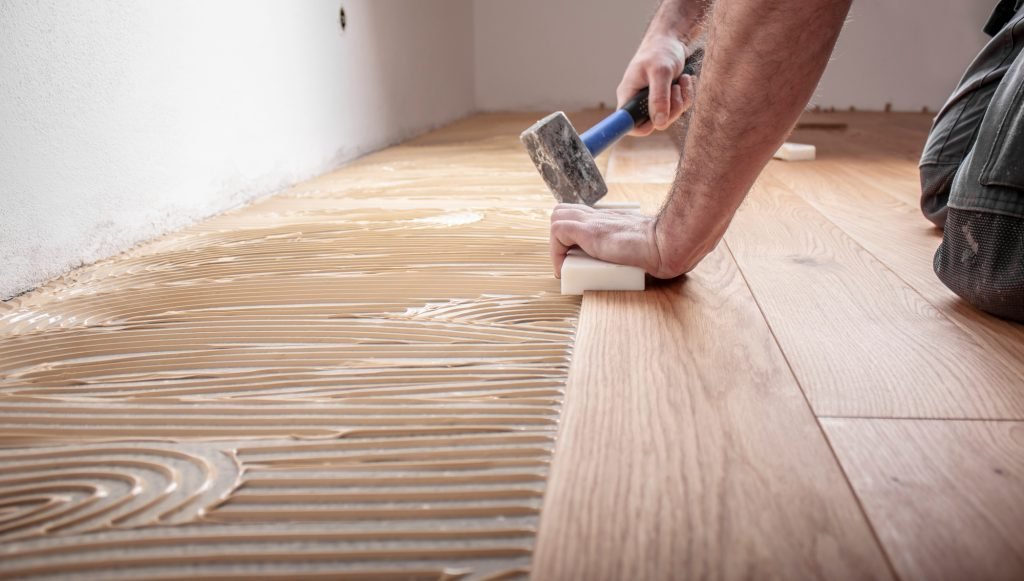Renovating a home can feel daunting, especially when your budget is tight. However, this doesn’t mean you have to compromise on creating a stylish, comfortable, and functional space. By making smart choices and prioritizing where to spend your money, you can achieve a successful renovation without breaking the bank.
Here are five practical tips and tricks on how to accomplish a budget-friendly renovation:
Focus On What You Can Change
When working with a tight budget, focus on changes that pack a big punch without breaking the bank. For one, you can start with color walkthroughs and design. This element is essential when renovating on a budget. Choosing the right colors can significantly impact your space’s overall aesthetics and feel. You can transform the atmosphere of a room simply by changing the color palette.
Moreover, consider swapping outdated hardware for modern, stylish pieces. It’s a small change that can dramatically update the look of your kitchen or bathroom. Light fixtures can also make a significant impact. A statement piece in a living room or dining area can serve as the focal point, while updated fixtures in a bathroom or kitchen can provide a fresh, modern feel.
Remember, sometimes enhancing what’s already there is more beneficial than making drastic changes. Fresh paint, new hardware, and updated light fixtures can transform a space without necessitating a full-scale renovation.
Set Your Budget
One of the steps to a successful budget-friendly renovation is setting a realistic budget. Your budget should accurately reflect what you can truly afford to spend. To set an effective budget, you’ll need to carefully evaluate your finances and consider the cost of materials, labor, and unexpected expenses.
When setting your budget, always include a contingency fund. This extra money will cushion you from unforeseen costs and prevent you from going over budget. On average, a contingency fund should be about 10-20% of your total renovation budget.
Here are some additional tips for setting a successful renovation budget:
- Research Costs: Look up the prices of materials and labor in your area. This will give you a good sense of what your renovation could cost.
- Prioritize: Determine which renovations are most important to you. Spend more money on these and save on less crucial projects.
- Get Estimates: Reach out to contractors for quotes. This can give you a more accurate idea of labor costs.
- Track Your Spending: Once your renovation begins, track your expenses. This will help you stay on your budget and adjust as needed.
Planning thoroughly and setting a budget are your tools for budget-friendly renovations. With these, you’ll make more informed decisions with your renovation, making the entire process seamless and efficient.
Choose Your Materials Wisely
Materials can significantly influence the cost of your renovation project. Therefore, it’s essential to make wise choices. For instance, laminate countertops over granite or quartz can save you a significant amount without sacrificing style or functionality. If you’re updating your floors, consider vinyl or laminate options that mimic the look of hardwood without the hefty price tag.
Here are a few tips to help you choose materials wisely:
- Compare Prices: Shop around and compare prices to find the best deals. You might be surprised by the price variations for similar products. Additionally, you may find sales, discounts, and even second-hand options.
- Opt for Lower-Cost Alternatives: Choose materials that offer the look you want without the high cost. For instance, as mentioned, opt for laminate or vinyl that mimics hardwood.
- Be Flexible: If you’re not set on a specific material, you can take advantage of sales or clearance items.
- Repurpose And Reuse: Before you rush to buy new furniture or decorations, look at what you already have. With creativity and elbow grease, you can repurpose old items into something new and unique.
Remember, when choosing materials, the goal is to strike a balance between quality, aesthetics, and budget.

Do It Yourself
Taking one project at a time, as your budget permits, is a wise and cost-effective strategy. Labor costs can quickly escalate, particularly for more minor, time-consuming tasks. When you pick up the paintbrush, lay down the tiles, or assemble the new furniture, your wallet breathes a sigh of relief. Just remember to tackle projects you feel comfortable with. If a job seems too complicated or beyond your skill set, don’t hesitate to call in the professionals.
Be Patient
Remember, renovations don’t have to happen all at once. Handling one project at a time, as your budget permits, is a sensible and cost-effective approach. For instance, you can focus on renovating one room or area at a time. This allows you to plan and budget more effectively. It also lets you avoid the chaos of having your entire house under construction at once.
Patience can also extend to waiting for sales or discounts on the materials or furnishings you’ve got your eye on. Seasonal sales or clearance events can bring substantial savings that stretch your budget further. Ultimately, patience in renovations can result in better planning, less stress, and more savings.
Conclusion
Renovating on a budget doesn’t mean compromising on style or functionality. By planning wisely, making smart choices, and being creative, you can transform your space without overspending. So, take these tips, roll up your sleeves, and start creating the home of your dreams today!